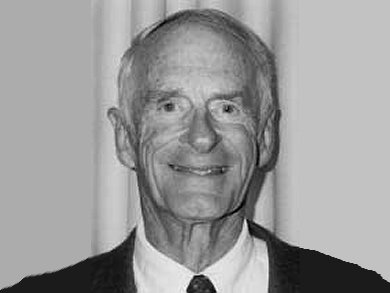William Knowles, Nobel Prize laureate in Chemistry in 2001, passed away on June 16, 2012. Knowles was best known for his work on asymmetric synthesis, especially hydrogenation reactions. He developed chiral phosphine ligands that proved effective in the enantioselective synthesis of L-DOPA for the treatment of Parkinson’s disease.
William Knowles was born in Massachusetts, USA, in 1917 and attended Harvard University as an undergraduate, majoring in chemistry. On graduating in 1939, he moved to Columbia University, New York, USA, to study under Professor Robert Elderfield. In 1942, Knowles started at the Thomas and Hochwalt laboratories, Dayton, Ohio, USA, which had recently joined Monsanto, and in 1944 he was transferred to St. Louis, Missouri, USA, to work on plasticizers and intermediates. Knowles spent several months working in the group of Professor Robert Woodward as part of a company-sponsored post-doc, trying to find a way to commercialize Woodward’s synthetic approach to cortisone.
Knowles continued to work for Monsanto until his retirement in 1986. During this time he was involved in a variety of synthetic problems, which included the total synthesis of steroids and Chloramphenicol, and the selective hydrogenation reactions for which he is known.
- Asymmetric Hydrogenations (Nobel Lecture),

William S. Knowles,
Angew. Chem. Int. Ed. 2002, 41(12), 1998–2007.
DOI: 10.1002/1521-3773(20020617)41:12<1998::AID-ANIE1998>3.0.CO;2-8 - Asymmetrische Hydrierungen (Nobel-Vortrag),

William S. Knowles,
Angew. Chem. 2002, 114(12), 2096–2107.
3.0.CO;2-Z”>DOI: 10.1002/1521-3757(20020617)114:12<2096::AID-ANGE2096>3.0.CO;2-Z



